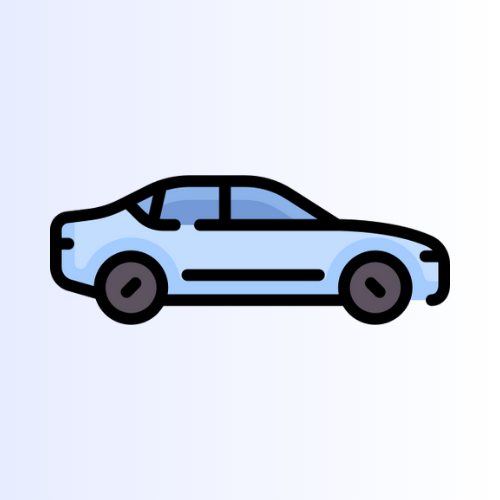Context for the inexperienced: these are cone seat GM lugnuts, the cone portion is supposed to face IN towards the wheel as they are self centering, not OUT… guy didn’t know wtf he was doin
I was helping a lady at work change a flat last week and another dude who came in as I was finishing up tried to butt in and argue with me that I was putting the lug nuts on backwards. Even after I explained how they worked. I had to walk him down the lot and show him the rest of her tires and 3 other cars with them to get him to shut the fuck up about it. It’s extra stupid because he knows I used to be a mechanic. I’ve put 1000s of tires on. I know what I’m doing.
I’m probably among the least mechanically proficient people in here, and even I know to turn nuts with that centering cone thingy the right way.
I don’t do a whole lot of maintenance myself, but during a period of being broke as a bum and really needing new brakes to pass inspection, I did figure out how to change disks and pads. A little while after that I also learned to get rid of air in the brake system.
A little while after that I also learned to get rid of air in the brake system.
lol
Yeah, I had a short commute, during which I noticed that the brakes weren’t quite right. I’d only changed calipers on two of them, and the others never had their brake hoses disconnected, so it wasn’t that worrysome, I just had to plan for slightly longer stopping distance. And the brakes had a lot of give in them, and as a geek I know that air compresses, whereas fluids don’t, so my diagnosis/guesswork was spot on. I still don’t know how one properly gets air out of the system, but I figured that the air would either travel up to the tank, or it’d stay near the calipers, so I just disconnected the hoses and hit the brakes until the hoses stopped farting before I reconnected them. After topping up on bake fluid it worked as normal.
Heres the “correct” way to do it: get a buddy to pump the brakes (engine not running) until the pedal is hard. Keep pressure on, open the bleeding valve, see and hear the farting, once it stops, close the valve, release pressure from the pedal, pump pedal until hard, keep pressure, open the bleeding valve… etcetc, repeat until no more farts come out. Also, repeat it in every corner, air might get into the other lines as well, especially if you have the lines open for long periods of time. At the end, make sure the brake fluid reservoir is full.
If you are like me and have no friends, get a vacuum pump, attach it to the bleeding valve, start sucking, open valve, close valve once no air is coming out. Check fluid levels.
No friends here either, but I somehow managed to contract a GF once upon a time, and she helped.
What are the chances my car (an ancient Volvo that still runs fine, by the way) doesn’t have bleed valves? I can’t recall seeing anything very obvious.
What are the chances my car (an ancient Volvo that still runs fine, by the way) doesn’t have bleed valves? I can’t recall seeing anything very obvious.
None.
https://d3nevzfk7ii3be.cloudfront.net/igi/BE3BLkIlAeLu2qlE.large
That picture shows a Volvo 240, but the tube is connected to the valve.
https://turbobricks.com/index.php?threads/1990-volvo-240-brake-bleed-process-help.298643/
I’ve only worked on one Volvo, but I owned and fixed several SAABs.
That caliper looks very similar to the ones I have on my 940, so I guess I just didn’t notice it.
This is a demo video for a 940
an ancient Volvo that still runs fine, by the way
The ancient ones always run better than the new ones anyway. I recommemd you hold on to that brick as long as you can. And I say this as a Finn, so its high praise for a swedish product.
“see and hear the farting” Classic, page 872 of the Mechanic’s Handbook!
One of the videos on the real mechanic react youtube channel had a clip of a car that was making farting noises from the fuel filler cap lol
He should really stop doing any of it
Making me glad I bought it off him before he killed someone.
This is also an older Cadillac that needs a very specific wheel bearing adjustment (yes, a bearing adjustment!) sequence every 30k miles and he didn’t do it, so the front right tire had like 3/8" of play top to bottom. Sigh.
every 30k miles
Or slightly more often, if you use wheels like this.
How the fuck do you adjust a bearing?
There’s a nut that you tighten that changes how tight the bearing is being squeezed. You adjust it so that the bearing turns but doesn’t have any play
More specifically, on modern cars, you’ll normally have a sealed bearing/hub assembly, which does not need adjusting.
The ones that need adjusting are where you have an open spindle, the hub and [rotor|drum] are one piece, and the bearings are open and need to be greased. You’ll have an inner bearing, then the hub/brake, then an outer bearing, topped off with a big nut. You snug that nut down until the spinning hub just starts to get tight, then back it off a 1/4 turn and fix it in place with a cotter pin.
More specifically modern tapered bearings are designed to run under continuous preload (the shaft inside with a nut provides constant clamping force so that the bearing is constantly in contact with its entire bearing race). These older bearings run with no preload, I think largely because machining tolerances were poorer and the races were not always perfect, so the weight of the car applies load to force bearing contact only where needed. The downside is that these bearings need repacking with grease and adjusting very frequently.
I guess I’ve only ever worked on pressed bearings, because I’ve never heard of that.
Yeah, your average passenger vehicle won’t have them. Trailers and heavy duty trucks use them though. I only know about it through YouTube
Jesus that’s bad.
Honestly, though, if you don’t grow up working on cars seemingly obvious things aren’t obvious. A part of me wants to applaud him for learning to work on his car himself.
I am kinda shocked that wheel wasn’t vibrating like crazy driving down the highway though.
It did shimmy slightly around 60, but this is unrelated to that (flat spotted tires are obvious).
I do admire that he at least did the work, but a visual inspection should make it clear there’s a cone on the wheel too… or maybe a quick Googl, or take a look at it before you pull the nuts off. Idk. I’ll monkey mechanic a lot of things, but I take wheel/brake/suspension related work VERY seriously and will follow factory torque and procedure religiously, it disappoints me when other people don’t do the same because if this were to wear thru and snap a stud or three, it could kill some people.
Yeah I agree with all of that.
One of my pet peeves is giving safety critical items like this a couple gut-feel ugga duggas instead of following the right procedures. I recently had a body shop destroy half a dozen studs on my car zipping them on with air tools.
It’s crazy how much we have normalized half-assed wheel installations.
Just wanna say thanks for posting something OC and interesting here. All of the other things I’ve seen have been shitty “memes” that should’ve stayed on Facebook.
I used the wrong lugs on the OEM winter wheels on my RSX. At first I didn’t know any better (conical vs ball seat), but once the damage had been done I kept using them. The OEM wheels were already fairly rough when I bought the car. Oops, but at least I know better now, and at least I was doin’ better than this guy.
Of course, i’m always happy to share.
Hahaha, I’m pretty sure mixing up ball vs cone seats is a rite of passage for all auto mechanics. I’ve done it too. Especially after they’ve been on and off a few time, bastards look identical unless you really really look close. But getting the seat completely on the wrong side… sigh.



